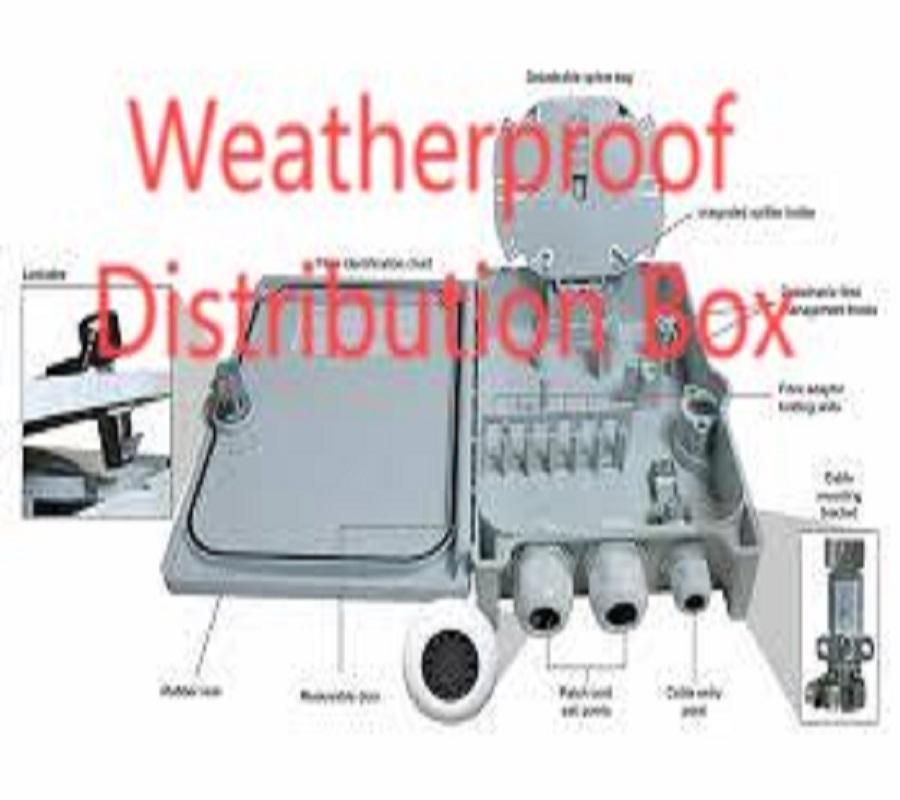Weatherproof Distribution Box Selection Guide by Nante

Selecting the right enclosure is crucial when you need resilient outdoor power management, and a well-engineered Weatherproof Distribution Box placed at the head of an outdoor circuit can be the difference between predictable service and frequent field failures. Properly specified enclosures protect wiring and equipment from water, dust, UV exposure, and mechanical damage while enabling safe access for maintenance; experienced manufacturers translate field conditions into choices about materials, sealing, and internal layout so the installed box serves reliably for years.
Assessing site conditions and defining requirements
Begin every specification by mapping the site. Understand prevailing weather, likely contaminants, washdown procedures, and the probability of physical impacts or vandalism. Coastal locations demand higher corrosion resistance than inland sites, while industrial yards may expose boxes to oils, solvents, or abrasive particulate. Consider temperature extremes, solar gain, and thermal cycling because these influence material choices and component derating. A clear requirements document that captures ingress protection (IP) targets, mechanical impact (IK) expectations, and any regulatory constraints streamlines vendor selection and reduces surprises during commissioning.
Materials, coatings, and corrosion management
Material selection affects longevity more than any single cosmetic choice. Stainless steel offers robust corrosion resistance but adds weight and cost; powder-coated aluminium balances price with good environmental resistance if the coating system is properly specified. Glass-reinforced polyester (GRP) provides electrical isolation and excellent resistance to many chemicals and UV exposure. Pay attention to fasteners, hinge materials, and seals—these are common failure points. Specify marine-grade or stainless fasteners in corrosive atmospheres, and require coating thickness and prep standards when powder-coating is used to avoid premature flaking or corrosion undercutting.
Sealing strategies, cable entry, and drainage details
A durable seal depends on correct flange geometry, gasket compression, and cable gland selection. Compression-style gaskets with even clamping force perform better over many maintenance cycles than thin adhesive foams. Locate cable entries to minimize water pooling and choose certified glands sized for actual cable diameters to prevent seal stress. Where condensation is possible, provide drainage paths or desiccant solutions and consider sloped covers to shed water and debris. For enclosures exposed to high-pressure cleaning, verify sealing under dynamic spray conditions and specify higher IP ratings accordingly.
Thermal planning and electrical layout considerations
Heat management is often overlooked yet essential for distribution boxes housing transformers, breakers, or control electronics. Solar gain can elevate internal temperatures substantially, so reflective finishes, light colors, and thermal breaks help reduce heat ingress. For boxes with significant internal dissipation, plan ventilation, filtered vents, or active climate control to protect sensitive components and reduce derating. Arrange internal layouts to separate high-heat items from sensitive electronics and provide adequate spacing for airflow and safe working clearances during maintenance.
Mechanical design, mounting, and serviceability
Mechanical resilience goes beyond wall thickness. Reinforced ribs, internal mounting frames, and solid mounting bosses distribute stress and resist deformation from impacts or tightening. Choose mounting types—pole, wall, pad, or recessed—based on exposure and accessibility. Security features such as tamper-evident fasteners, concealed hinges, or keyed locks reduce unauthorized access while allowing rapid service by technicians. Design for serviceability with removable panels, DIN-rail systems, labeled terminal blocks, and clear wiring routes so replacement of modules and troubleshooting are efficient.
Testing, commissioning, and ongoing maintenance
Require manufacturer test data for IP and IK ratings, and when necessary ask for additional salt spray, UV, or chemical resistance tests. During commissioning perform insulation resistance checks, torque verification on terminals and fasteners, and thermal scans under realistic loads. Schedule follow-up inspections after initial operation to catch any settling or seal shifts caused by thermal cycling or vibration. Building a simple maintenance calendar—inspection of gaskets, fastener torque checks, and terminal tightness—prevents small issues from evolving into outages.
Lifecycle planning and spare-part strategies
A small investment in spare kits and standardized parts lowers lifecycle costs significantly. Stock common gaskets, latches, terminal modules, and filtered vent elements to bridge procurement lead times. Design with modular replacement in mind so a failed component can be swapped without replacing the entire assembly. For remote or critical sites, include condition monitoring for humidity and temperature to trigger preemptive maintenance and reduce emergency interventions.
When teams align site assessment, material choices, thermal planning, sealing integrity, and maintainable mechanical design, a weatherproof distribution box becomes a predictable, long-lived asset rather than a recurring liability. Thoughtful procurement, careful commissioning, and a modest spare-part strategy together keep outdoor distribution systems safe and dependable. For detailed product information, specifications, and technical guidance, visit https://www.nante.com/news/industry-news/weatherproof-distribution-boxes-features-applications-future-trends-and-more.html
- Art
- Causes
- Crafts
- Dance
- Drinks
- Film
- Fitness
- Food
- Juegos
- Gardening
- Health
- Home
- Literature
- Music
- Networking
- Other
- Party
- Religion
- Shopping
- Sports
- Theater
- Wellness
